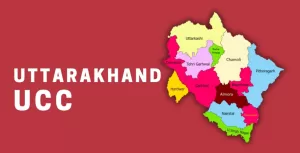In all of the 20th century we have had only three pandemics, including the Spanish flu beginning 1918. In just the first two decades of the 21st century, we have encountered five pandemics: avian flu in 2009, SARS in 2002, MERS in 2012, Ebola in 2013-14 and finally Covid-19 in 2020.
Animals in or around Wuhan’s wet markets and farms are suspected to have transmitted SARS-CoV-2, the coronavirus causing Covid-19, to human bodies. In sync with the Sino-US trade and technology war, several of the initial responses to the Covid-19 pandemic were xenophobic, invoking food habits and alleged mishandling and underplaying of the disease in the initial phase by China. Accusations that particular countries or races are responsible for disasters caused by disease are well-known weapons used by the hegemonic powers. As the WHO reported, since 1580 Eurasia has experienced several waves of influenza, which were often ascribed to foreign lands vilifying an enemy as the originator of the disease (Patterson 1986).
But the same form of transmission as in China and the coronavirus is true for recurring low-intensity influenza strains emerging in California, Michigan, Texas, Minnesota, Dakota, Iowa, and Wisconsin — all states hosting biggest industrial production of chicken and turkey in the US — and in South China, with its large geese farms (Wallace 2016). If chicken, turkey, geese, and hogs are transmitting pathogens to human bodies, is veganis the answer? Is the wildlife trade, driven by the appetite for bush meat, bringing new viruses into contact with humans? Are bats and rodents responsible for the rising frequency of pandemics? All these are open questions that need evidence-based research to establish definitive causality.
It is significant that several of the epidemics of the recent decades have been initially detected in the global South: China, Thailand, Hong Kong, Malaysia, Egypt, and the Arabian Peninsula. What is evident from the geography of occurrence and spread of diseases in the recent past is that many of them are linked with the proliferation of the global livestock and agribusiness food chains in the late 20th and early 21st centuries. Huge investments into multinational agribusinesses have transformed peri-urban hinterlands in the global South into ghettos of global agribusiness food chains. These are the very same regions that have been reported as the hotspots of new virus strains.
Zoonotic spillover
Epidemiologists have noticed the existence of animal coronaviruses since 1930s, but human strains have emerged only in the past few decades (Ye et al 2020). For many years, four types of community-acquired coronaviruses circulated amongst humans, causing common cold every year. Unlike them, the coronaviruses causing SARS and MERS were transmitted to human bodies from a reservoir animal through an intermediate amplifying host.
The WHO suspects that SARS-CoV-2 originated in bats, which are reservoirs of 3,000 types of coronaviruses circulating in the planet (Malm 2020). As bats fly or hang high on trees, their excrements and saliva, carrying the virus, lands on intermediate hosts lying below: civets, camelids, camels, pangolins, or bovines. In these new hosts, the virus amplifies and mutates to new genetic combinations, ahead of the next step of transmission. In a similar manner, ducks, pigs and chickens or migratory birds act as intermediate carriers for other viruses before ultimately infecting humans in specific conditions.
It is important to note that these viruses, long existing within the bodies of reservoir animals, did not ‘naturally’ jump into human bodies. The frequency of human transmission has increased because of a particular kind of human engagement with nature. Pathogens spill over to human bodies in conditions of stress when reservoir animals or amplifying hosts lose their habitat or are forced to live in crammed spaces. The protective shield that contained and restricted the movement of the virus gets eroded.
As Malm (2020, 34) puts it cogently:
If it weren’t for the economy operated by humans constantly assailing the wild, encroaching upon it, tearing into it, chopping it up, destroying it with a zeal bordering on lust for extermination, these things wouldn’t happen. The pathogens would not come leaping towards us. They would be secure among their natural hosts. But when those hosts are cornered, stressed, expelled and killed, they have two options: go extinct or jump.
A scientific study of 2008 analysed 335 outbreaks of emerging infectious diseases since 1940 and found that their number increased significantly in the recent decades (Malm, 2020). More importantly, a large number of these outbreaks were caused by zoonotic spillover from animals to human bodies. The Nipah virus erupted in Malaysia when the hog industry became intensive and pathogens spilled over from their natural reservoir amongst wild fruit bats, first to pigs and then to human bodies (Pulliam et al 2012). South China and Hong Kong have been the repositories of various influenza virus subtypes through the decades. As identified by WHO officials in the 1980s, the primary reason for this is the mass production of ducks and chickens and the faecal-oral transmission of pathogens of various sub-types of influenza (Shortridge 1982).
MNCs and agribusiness
Chicken, ducks, and pigs have been reared for food for millenia. But the sudden surge of pathogens transmitted from them to humans is primarily because of the way these birds and animals are produced, reared, transported, and sold with the sole purpose of making profit. Industrial production of food increases the possibilities of zoonotic spillover from amplifier hosts. Animals and birds, wild or domestic, grow in crammed spaces with low hygiene and secrete enormous quantities of fluids and excreta that carry pathogens. Humans who closely work in these farms are easy prey for the pathogens, which mix and mutate within their human hosts.
Human intervention into modifying natural objects for the sake of increasing productivity and profit disturbs the ecological balance and mutual dependence. Bio engineering in agribusiness has gone to the extent that featherless chickens are being produced in Israel (Wallace 2016). This reduces the cost of production of meat as the stage of defeathering can be skipped in the process. In Guangdong in south China, counter-seasonal lighting schedules are artificially created so that geese exposed to such environment lay eggs out of season (Sun et al 2007). As the profit roughly doubled from such an arrangement, smaller farms are outcompeted by vertically integrated larger farms. But these human intrusions of not only appropriating and commercialising what is in circulation, but also creating genetically modified seeds, plants, birds and animals as objects of profit often have negative consequences. It increases the probability and frequency of disease, the cost of which is shifted to birds and animals, or to the workers of the poultry farms, consumers and the neighbourhood at large.
The eruptions of epidemics in the recent past spatially coincide with the geography of deforestation. As the stretches of animal-human interaction increase due to deforestation, the edges of fragmented forests become hotspots of zoonotic spillover. Alongside, the industrial production of livestock brings amplifying hosts into stressed conditions when they can easily transmit viruses to humans in their close vicinity.
Fragmented forests force reservoir animals like bats and rodents to fly and move from one place to another in search of food and shelter. This increased movement and coming in contact to habitations of other animals or humans immensely increases the possibilities of transmitting the pathogen to the next host. And this perhaps explains why bats, which otherwise possess tolerance to viruses and act as an impervious defence in protecting others from contamination, have been identified as the dreaded villain in the recent episodes of disease spread. Horseshoe bats in China, flying foxes in Australia, and vampire bats in Brazil are pushed out from their caves and forests and end up spreading pathogens. (The story reaches a full circle when we appreciate the fact that about a quarter of the world’s bat population lives in South Asia, and a huge number of them are in chronic stress as they lose their habitat due to human encroachment.)
Despite the slums of the rural hinterland of Asia and the Arabian Peninsula being sites for recent disease outbreaks, investors from the global North have huge investments in Chinese poultry farms and processing companies. Global capital and multinational corporations involved in agribusiness are reluctant to address the consequences of deforestation. For them, it is absolutely prudent to increase yields by expelling small holders from land, to cut forests which were left idle for long, and to organise the production of feed and fuel ‘efficiently’. This rationale of profitability suggests that land should be more productively used in producing feed for animals to address the growing ‘meatification’ of diets and also to substitute fossil fuel by producing alternative sources like bio fuels.
Moreover, with the rising food prices caused by rising energy cost and declining sustainability, industrial agriculture, driven by the corporate food regime, seems to have lost its steam. There is a crisis of declining bio-physical productivity, soil depletion, and reduction in efficiency of nitrogen use. Global capital, in search of cheap sources of land, water, and labour, has focused on the global South, and integrated huge tracts of land and livestock into global agricultural value chains. At the same time it has created financial assets linked to corporate production of food and fuel for speculative gains.
The resurgence of plantations in southeast Asia and Latin America has razed roughly 40% of tropical forests located in seven countries of these two regions during just the first decade of 21st century (Malm, 2020). Soybean, corn, palm oil, ethanol, and cattle rearing for large scale production of beef has encroached tropical forests and destroyed biodiversity. An average plantation of palm oil in Indonesia covers 3,000 hectares of land and a typical cattle ranch in Brazil dedicated for the production of beef covers 1,000 hectares. Large corporate cross-country alliances around production of soybean, rapeseed, ethanol operate in the US, China, South Africa, Malaysia, Indonesia, Brazil, India, and Mozambique. In developing countries, 227 million hectares of land, an area equal to the size of Western Europe, has been leased out or sold since 2001 (Oxfam 2011). Land itself has become a lucrative asset, especially after the crisis of financial assets in the crash of 2008 (McMichael 2012).
Rob Wallace (2016) in his Big Farms Make Big Flu provides a fascinating account how the corporatised livestock revolution — large scale stockbreeding, aquaculture, horticulture, industrialised poultry and pork production — has led to the loss of biodiversity, genetic monocultures of host livestock, high population density of livestock, and trade in wild animals. The vertically integrated industrial production involves a detailed assembly line of breeding, raising, slaughtering, and processing, with feed mills attached to them. Agribusinesses search for places where animal health surveillance is weak or degraded and the cost of raising animals is cheap. Countries which offer cheap land and labour producing corns or soybeans — the main ingredients of poultry feed — are therefore more likely to host producer plants for multinational agribusiness companies. The multi-country presence helps companies distribute risk and compensate losses from any outbreak of disease in one country.
Even the political establishment in various countries tend to favour corporate interests and compromise on issues of public health and hygiene. Mike Davis (2005) narrates how during the outbreak of H5N1 in 2004, the Thai government colluded with the Thailand-based multinational CP Group, the fourth largest poultry producer in the world, whose facilities are spread across several countries including the US. Contract farms were secretly provided vaccines and asked not to report about the disease. Production actually increased in Thailand during the outbreak. Once the Thai press broke the news of the epidemic it was trivialised by the ruling establishment and the Thai Prime Minister Thaksin Shinawatra, along with other ministers, publicly ate chicken to rebuild consumer confidence.
The perils of profit
Karl Polanyi (1944) in his The Great Transformation discussed how market capitalism creates ‘fictitious commodities’ like water, soil, trees, or labour; the prices of which do not represent the social and cultural values or the physical need of those objects. The creation of a ‘market society’, extending the logic of market even to the production and appropriation of nature, faces its own barriers beyond a point. Eventually, resistance emerges, giving rise to institutions that regulate the unbridled expansion of market relations. Polanyi however did not link this to the process of capitalist accumulation as we see in Marx’s discussion on ‘metabolism’ (stoffwechsel) in Grundrisse and Capital.
Marx was never in favour of ‘nature worship’. Instead, he believed that human engagement with nature, unlike other animals, is a conscious process by which humans create a ‘second nature’ around them and in that process also change themselves. Marx’s idea of ‘metabolism’ or material exchanges between human beings themselves and with their surroundings is premised on the idea that nature is human’s ‘inorganic body’ (Marx 1961). Therefore, humans while acting upon nature and changing it should not treat themselves as foreign entities, assuming resultant changes being inconsequential for them. Rather, they are very much part of the changed surroundings.
Marx argues that the incessant thirst for capital accumulation tends to undermine this basic premise of human engagement with nature. The process of deforestation, land grab, destroying natural habitats, biodiversity, and artificially producing bio-engineered objects without caring about their adverse consequences, punctures any sustainable metabolic relation between humans and nature. Studies on infectious diseases for the period 1940 to 2005 suggest that 44% of episodes are accounted for by changes in land use, deforestation and agricultural intensification (Malm 2020).
While vaccines might prevent infections, they can hardly destroy the potential causes of pandemics that have roots in the unending lust for profits, in the encroachment of land, and in the demeaning of labour and nature. We need a conscious collective planned metabolic interaction with nature appreciating that human beings need to engage with nature, change it, while being conscious of the fact that they are very much part of it. Such interventions should take into account the consequences of change and hence restrict the appetite for immediate private gains for the sake of long term sustainable collective well-being.
(Satyaki Roy is an Associate Professor at the Institute for Studies in Industrial Development, New Delhi. Article courtesy: The India Forum.)




